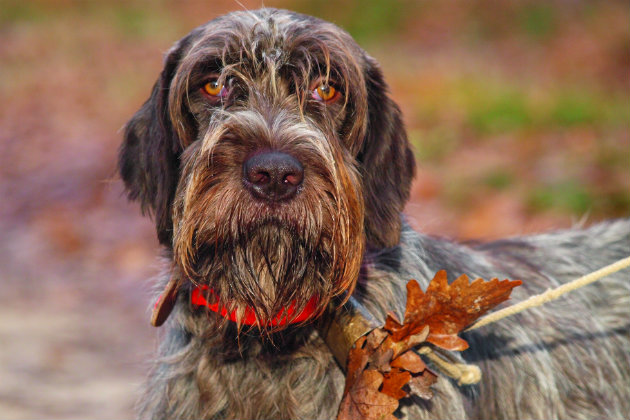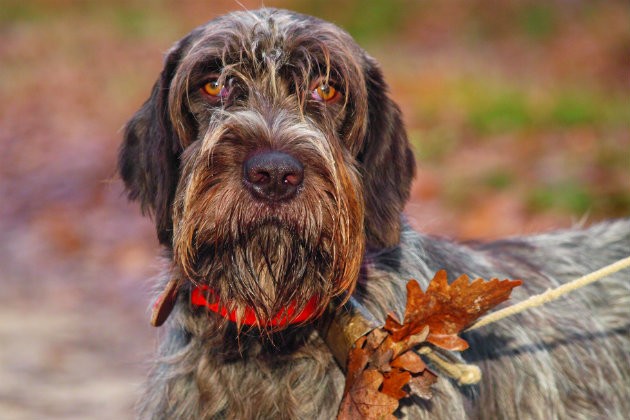Which will be the next generation of gundogs? Pedigree registrations are declining, while other breeds are developing a following, says David Tomlinson
Has the pedigree dog had its day? While it might be much too early to predict its eventual extinction, figures from the Kennel Club (KC) show compelling evidence of its decline. In 2006, a total of 103,773 gundogs were registered with the Club in the UK. Numbers held steady for the next couple of years, but then the decline started. In 2011 numbers dropped below the 100,000 mark for the first time, and have continued to fall every year since. Last year 83,918 gundogs were registered: you don’t have to be a maths genius to work out that’s almost a 20 per cent decline in 10 years.
Quite why registrations are falling is another matter. A drop can be expected during times of recession, but you would have thought that, by now, numbers would be showing signs of recovery. They’re not. What does seem evident is that the growing rise in the popularity of so-called designer cross-breeds is damaging the pedigree-dog business. One frustration from a working gundog viewpoint is that the KC’s statistics fail to differentiate between show- and working-bred dogs.
Breeds rising in popularity

Hungarian vizsla
Hungarian vizsla
This elegant and athletic HPR is enjoying a boom, with numbers of registrations more than doubling in 10 years to an impressive 2,165.

Hungarian wirehaired vizsla
Hungarian wirehaired vizsla
Echoing the success of its shorthaired cousin, this comparative newcomer is also doing well, with numbers rising from 258 in 2006 to 678 last year. It’s an increasingly popular shooting dog, and deservedly so.

Cocker spaniel
Cocker spaniel
Registrations of our smallest native spaniel have remained buoyant for the past 10 years, with the 2015 figure of 22,577 not far short of the peak of 23,744 in 2010. Most are destined to be pets, but this breed’s popularity in the shooting field continues to grow.

Spinone
Spinone
While our native pointing dogs may be falling from favour, this breed is not only holding its own, but also enjoying a modest surge in popularity. However, relatively few end up in the shooting field.

Korthals griffon
Korthals griffon
From just 16 registrations 10 years ago to 73 last year, this breed is slowly but steadily gaining ground. Identifying a Korthals griffon is tricky, as it does look like a cross between a spinone and a German wirehaired pointer.

Bracco Italiano
Bracco Italiano
You’ve probably never seen one of these laid- back Italians in the shooting field, but this is a breed on the rise. There were 51 registrations in 2006, but 147 last year.
Breeds declining in popularity

Golden retriever
Golden retriever
Registrations of golden retrievers have remained reasonably steady, but the 6,928 registered last year is well below the 9,373 of 2006. Why aren’t these handsome dogs more popular in the shooting field?

Black Labrador
Labrador
From a peak of 45,700 registrations 10 years ago, numbers have fallen steadily — down
to 32,507 last year. However, the Labrador remains by far the most popular breed in the UK, and it looks set to hold its premier position for many years to come.

Weimaraner
Weimaraner
In 2006 the “silver ghost” was arguably at the peak of its popularity, with 2,744 registered. Last year, the figure was 1,171. Could it be that would-be owners don’t like these dogs with undocked tails?

Irish setter
Irish, Irish red-and-white, Gordon and English setters
Registrations for all four setters continue to drop away, though the decline is comparatively gentle. It’s ironic that the English setter is still one of the most popular working breeds in several European countries.

English springer
English springer spaniel
There’s been a decline in registrations by a third since 2006: last year 10,246 were registered. However, there are probably more unregistered springers around than any other gundog breed, so the KC figures are misleading.
Designer dogs
Cross-breed dogs are all the rage, but it means pedigree dogs are suffering a decline.
There’s little doubt that the growth of demand for so-called designer dogs is depressing the demand for pedigrees.
What upsets the pedigree-dog enthusiasts the most isn’t the fact that cockers are crossed with poodles, but the fact that their breeders charge so much for the puppies. Whereas £500 will buy you a nice cocker puppy, a cockerpoo will set you back considerably more.
It is, of course, a classic case of supply and demand. If nobody is prepared to pay more than £500 for your pure-bred cockers with a six-generation pedigree there’s no point in trying to charge more. However, if you can sell all your cockerpoo puppies at £750 it has to be a more attractive proposition, at least for those who simply breed for financial gain. As the cockerpoos can’t be registered with the Kennel Club (KC), it’s another financial advantage for the seller, saving them £16 per puppy. It is, however, a worrying loss of income for the KC, whose multi-million-pound income comes chiefly from puppy registrations.
“Cross-breeding should, in theory, lead to healthy puppies, but you should still check before you buy”
Breeding Labrador to poodle, or cocker to bichon frise, should, in theory, lead to healthy puppies, unlikely to be carrying the nasty hereditary diseases that have become so common. However, even when outbreeding it’s still essential to breed from healthy (and health-tested) animals, free from hereditary genetic faults. There’s no doubt that if you mate, say, a Labrador with poor hip scores with a poodle that is similarly afflicted, the chances of the resulting offspring having poor hips have to be correspondingly high.
Though much criticised, the KC’s Assured Breeder Scheme is a brave attempt to try to ensure that anyone producing puppies is following best practice (though you can’t join it until you have bred at least one litter). But it only applies to those producing pure-bred, pedigree dogs. Breeders of Labradoodles, cockerpoos or whatever are excluded.
This means that if you are considering buying a springador or sprocker, the onus is very much on you to check out your prospective puppy’s parents. Have they been health checked? Are they good, healthy specimens? Was the breeding carefully planned, or was it an accident?
Research before you buy is sure to pay off in the long-term.




